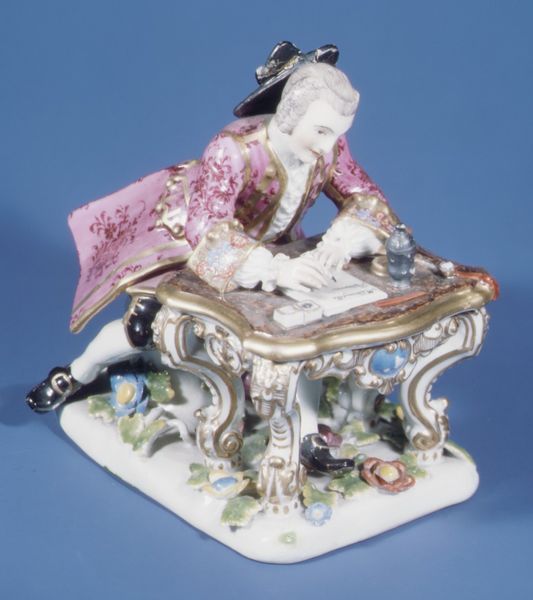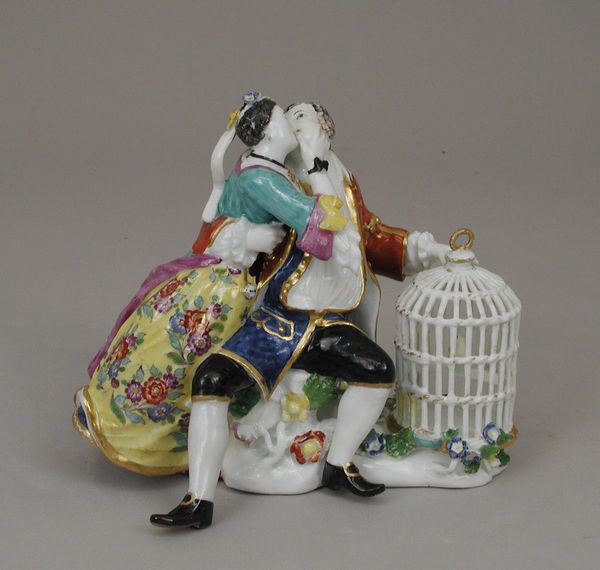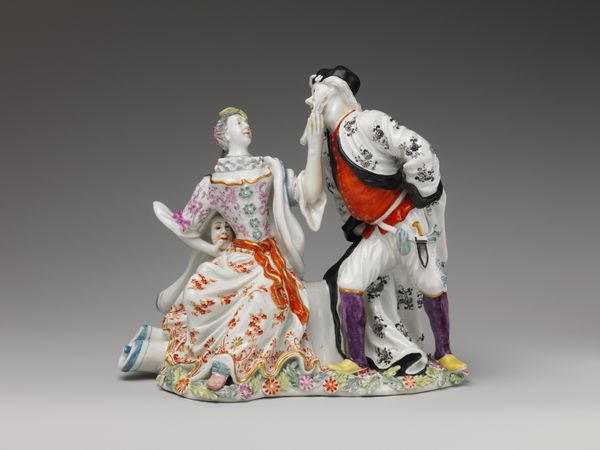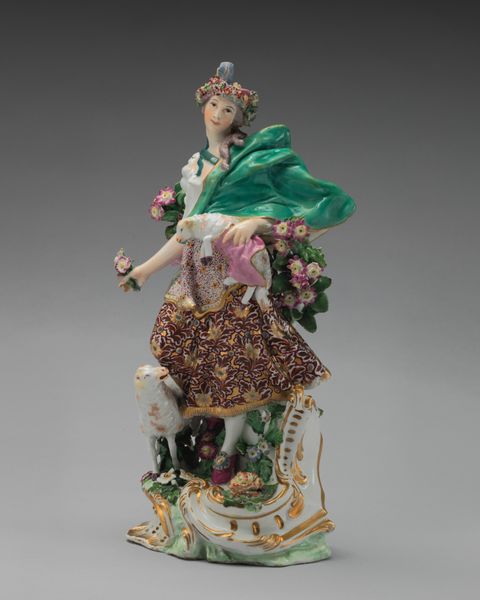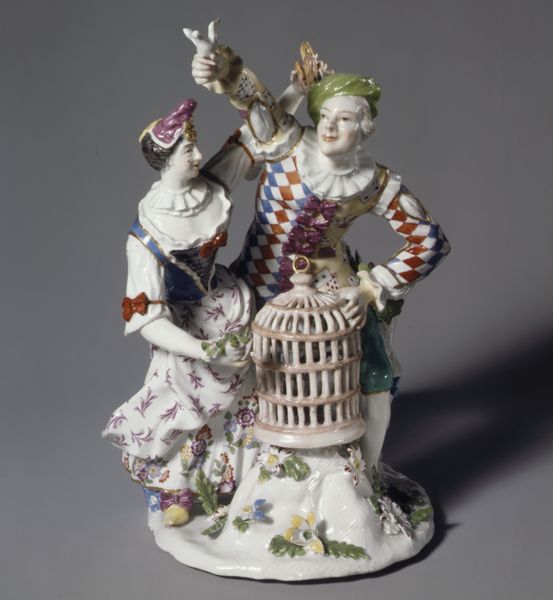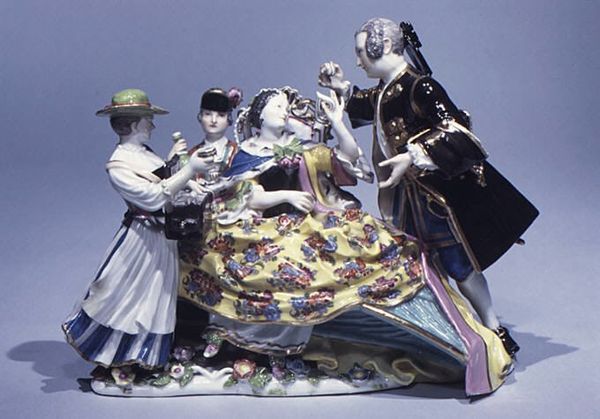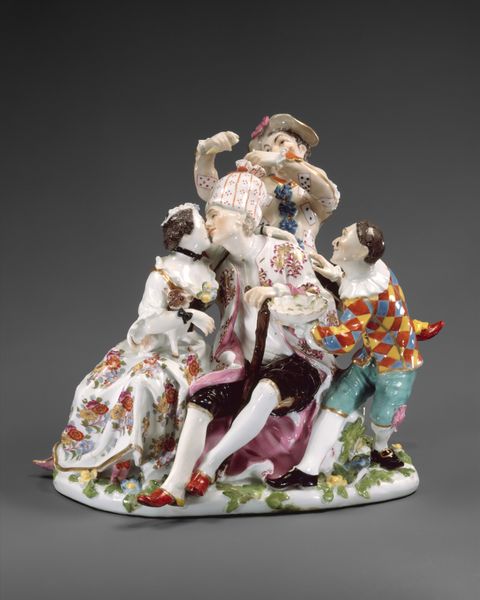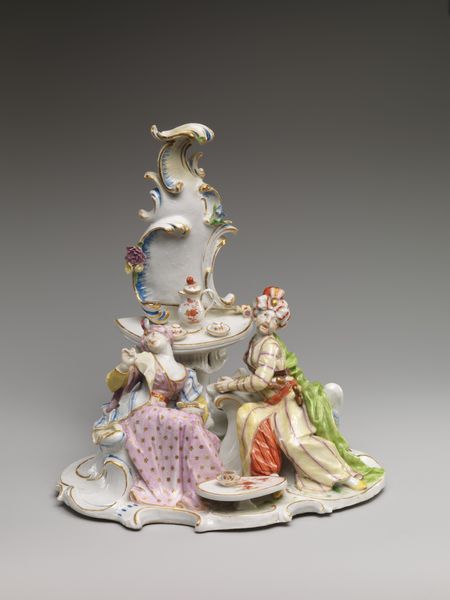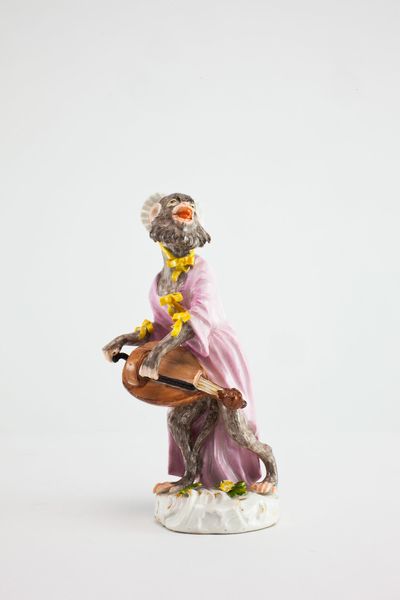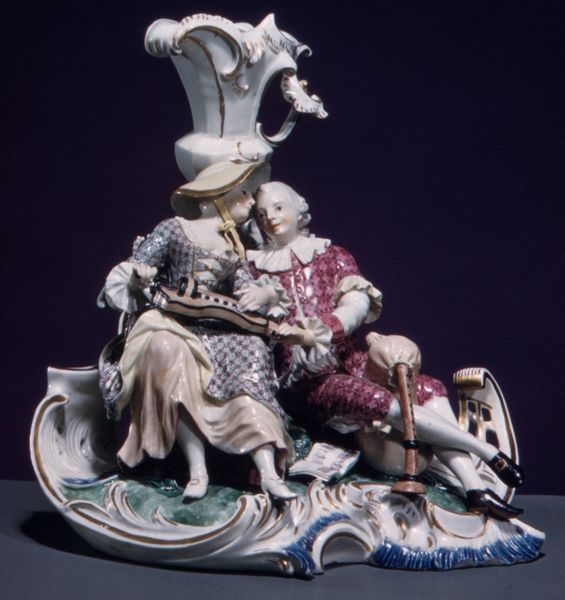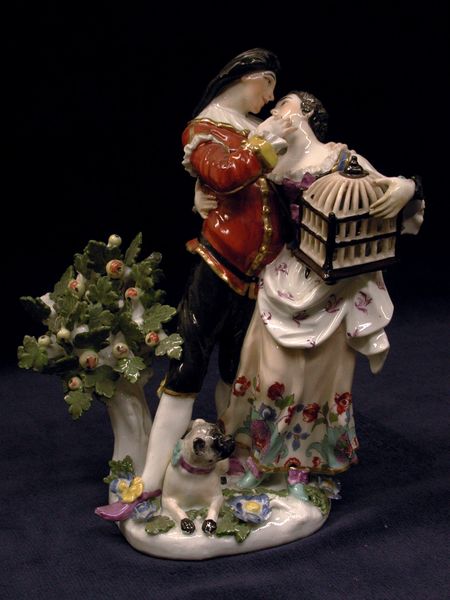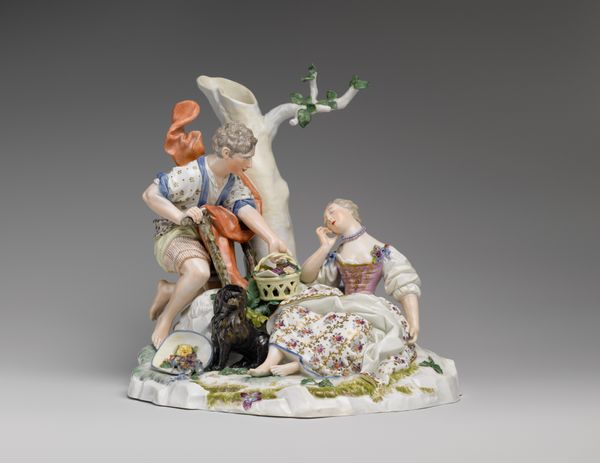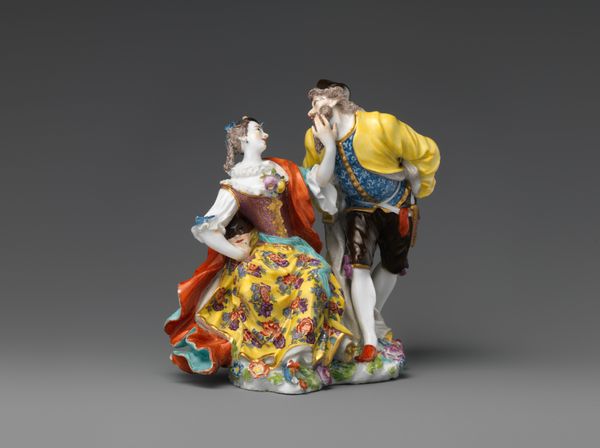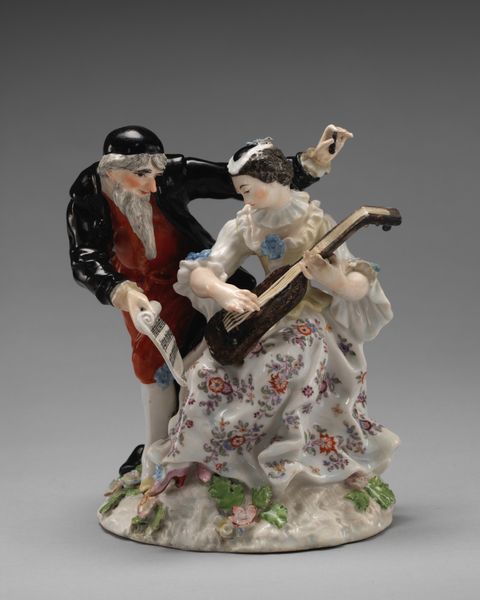
ceramic, porcelain, sculpture
#
portrait
#
fairy-painting
#
dog
#
ceramic
#
jewelry design
#
fountain
#
porcelain
#
figuration
#
intimism
#
sculpture
#
group-portraits
#
genre-painting
#
decorative-art
#
miniature
#
rococo
Dimensions: Height: 6 in. (15.2 cm)
Copyright: Public Domain
Curator: Let’s consider this captivating porcelain sculpture titled "The Handkiss," crafted around 1737 by the Meissen Manufactory. You can find this treasure here at The Met. Editor: Immediately, what strikes me is the dynamic arrangement of the figures—it's almost Baroque in its swirling energy, yet refined through the delicate Rococo sensibilities. The rich interplay of colors and textures… incredible. Curator: Indeed! The group presents a genre scene reflecting aristocratic social life. Consider the role of Meissen porcelain in the 18th century—it symbolized wealth, taste, and power, serving as diplomatic gifts or decorative objects in elite circles. Editor: Precisely! The miniature scene bursts with meticulous detail. Look at the intricate floral designs on the woman's skirt or the glints of gold tracing every edge. It almost transcends functionality, wouldn't you say? Curator: Undoubtedly, porcelain transcended functionality! What is particularly relevant is that representations like these reflect a social order—where you have a queenly figure seated on a throne, a kneeling admirer performing an act of deference, and the ever-present, enslaved servant off to the side, implicitly showing the hierarchy of labor. Editor: The figures exhibit stylized forms, certainly—notice the graceful S-curve in the woman's posture and the carefully sculpted drapery around the hand-kissing admirer. What is your assessment of this visual organization and what it communicates in and of itself? Curator: I read those aesthetic features not just as Rococo beauty, but also as evidence of carefully crafted aristocratic presentation for their elite audience. Each of the details, the poses, and the choice of subject contributes to the symbolic representation of their place in society and the display of their values and authority. Editor: It's a potent blend, really—the delicacy of the material playing against the powerful dynamics and societal tensions depicted in the scene. I find it both intriguing and somewhat unsettling, given its ornamental nature and the deep societal imbalances present in Europe at the time. Curator: That tension is exactly what makes it a key art object to study and place within the historical context of artistic, political and socio-economic realities. Editor: I concur. Thinking of it from this more comprehensive angle gives another layer of profundity to what might first be read as simply decorative.
Comments
No comments
Be the first to comment and join the conversation on the ultimate creative platform.
